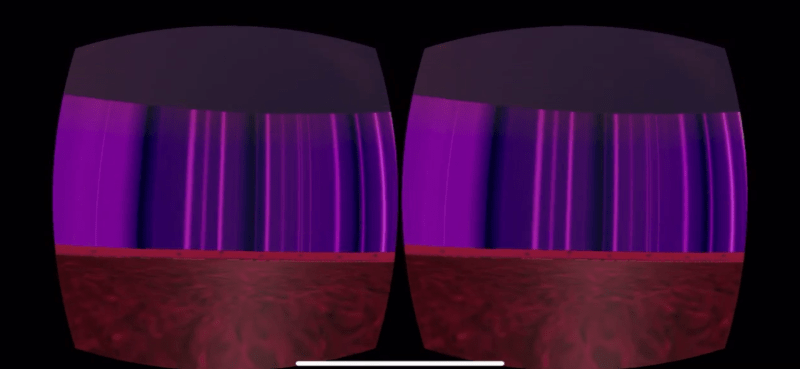One of the hard things about electronics is that you can’t really see the working parts without some sort of tool. If you work on car engines, fashion swords, or sculpt clay, you can see with your unaided eye what’s going on. Electronic components are just abstract pieces and the real action requires a meter or oscilloscope to understand. Maybe that’s what [José] was thinking of when he built a-radio. This “humble experiment” pipes a scan from a software-defined radio into VR goggles, which can be as simple as a smartphone and some cardboard glasses.
The resulting image shows you what the radio spectrum looks like. Granted, so will a spectrum analyzer, but perhaps the immersion will provide a different kind of insight into radio frequency analysis.
[José] admits the project is the result of a “boring morning” so there is probably some room for improvement. We wondered if an array of antennas could give you head tracking so you could see what direction a signal was coming from, or — at least — where it was strongest.
Is this really better than just staring at a waterfall display? Perhaps not. But it is still a novel approach and we have to wonder if it couldn’t be used for other things? Maybe a VR circuit simulator or visualizing antenna patterns, for example.
A spectrum analyzer used to be a big purchase, but not anymore. For that matter, VR headgear used to be a big deal, too.
















VR is still a pretty big deal. The Valve Index is $1300 or so for a full kit. I wish the companies producing the OSVR hadn’t abandoned it. I’m not nearly good enough at programming to push that project ahead on my own, and it was the only headset at the time that could be called affordable.
I suggest José turns off automatic translation on his site. Offer it, but gibberish by default sucks. Thank you.
On topic: now that VR + radio is mentioned, could look into apps that allow to use virtual desktops on VR headsets, like Immersed VR on Oculus stand-alones, to see if it’s a fun experience or just plain stupid. Some apps can create virtual monitors too, so I dunno, maybe HDSDR on a virtual 4K monitor is something I could literally dive into.
Am I missing something? It just looks like a 1.5D display wrapped around you in a circle which doesn’t add anything beyond a plain simple 2D display. I was expecting it to present more insight into the data through the 3D available in VR.
I have been dreaming of a VR or better yet AR program that can make visible and audible a wide range of Radio emissions as well as IR and even auditory wavelengths. I envisioned a room sized perimeter of various antennae all feeding into a SDR to determine the directionality and relative velocity of the signals thus generating an immersive experience capable of not only rendering the energy as auditory information but assigning frequencies specific colors in order to group them according to their wavelengths. All to give the participant the true experience of witnessing the intersection of all the radiation both manmade as well as cosmic radiation intersecting within this perimeter. To my mind it would look something like a hyperdimensional resonant transforming crystaline fractal. Excellent educational tool, safety analysis of the EMF in a given environment as well as an aid to revelatory psychedelic phenomenology.